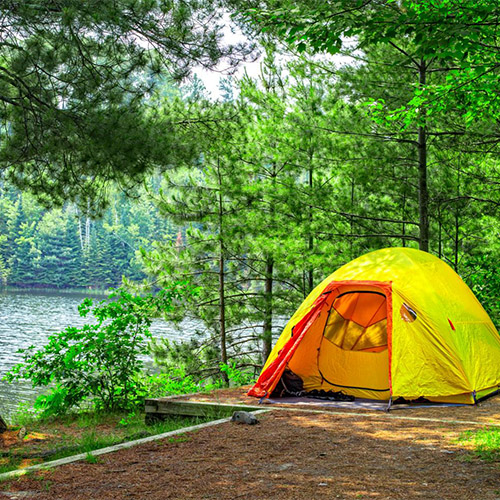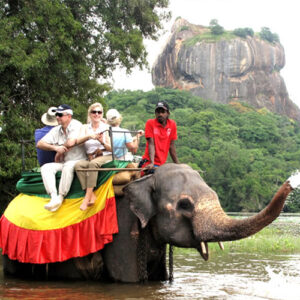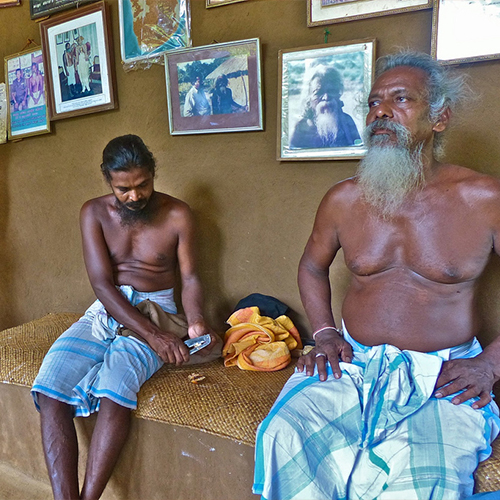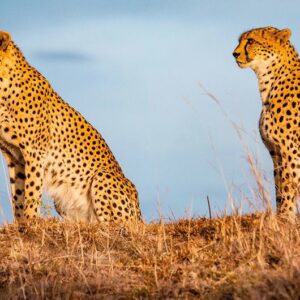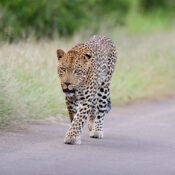Big cats in Sri lanka

Big cats in Sri lanka
Leopard’s fur is short and coarse in annuals from the Dry Zone but can be a bit longer in highland dweller. This kind of climate-related adaptation is seen in all Pantherapardus populations. The fur on the belly is longer and finer than the rest of the coat.
The size and the colour
The size and colour of leopards in Sri Lanka varies with geographical area which roughly corresponds to the type of habitat that individuals inhabit.
Leopards you see in the Dry Zone are smaller and lighter in hue than those inhabiting Up-country
habitats. Leopards in our montane forests have thicker coats and tawnier complexions; They are also generally bigger, and more robust, animals.
Wet Zone leopards are also “brighter” than Dry Zone individuals, all the better to blend in with the dark greens and dappled light of its domain. Indeed, very rarely, they occur in a melanistic form known in the vernacular as “Black Panthers”; a thrilling sight for the lucky observer, a fantastic wraith melting into
rainforest shadows. These black individuals still clearly display the black rosettes of the
tawny-coloured congeners but they are a jet black upon a black background.
Black panthers have been reliably reported from Hiniduma, Warakadeniya, Delwala, the Sinharaja Forest,
and Gurutalawa; one of these animals was actually kept and displayed at the Dehiwala Zoo in Colombo. Indeed, such melanistic animals can occur in the Dry Zone; one such (although not fully black) was shot in Tanamalwila and there is an unconfirmed sighting from the Dambulla area. Albinos also occur amongst leopards but none have been reported from Sri Lanka.
Prey
The leopard is Sri Lanka’s top terrestrial predator in the wild.Therefore it influences the population numbers and behavioural patterns of all species, but mostly Ungulates, that constitute its normal prey where it lives. It is safe to say that only healthy adult or sub-adult Elephants (Elephasmaxitnus), Wild Buffalo (Bubalusarnee), Sloth Bears, and crocodiles (Crocodylus spp.) are safe from attack by a hungry Leopard. But it is not only ungulates that are at risk.
Leopards have been implicated in the paucity of Jungle Cats (Felischaus) in Sri Lanka's forests. By contrast, in the Indian subcontinent, where Leopard numbers are far less per unit area than in Sri Lanka, Jungle Cats are the most abundant wild felid. It is clear that the absence of a Leopard in an area opens up the habitat to smaller predators and determines a different predator-prey dynamic and community structure. Leopards are resourceful creatures, though, and they can persist in areas that are notionally
unsuitable. Wherever they live leopards, like other carnivores, are adapted to a feast-or-famine regime and have been known to eat a quarter of their body weight in a single day.
Communication
Each night a Leopard will traverse most of its territory, especially the margins and sometimes the range will be criss-crossed several times. On these perambulations while one subject of interest is what prey might be available, the animal will also both check for and leave chemical cues in the form of sprayed urine, faecal deposits, and anal gland secretions. Often a leopard will rub against a tree, or rub its face against low branches, leaving its body odour and pheromonal signals. The phenomenon of “flehmen” is sometimes displayed when olfactory cues are being assessed.
In the case of males, which normally have territories that entirely or partially encompass territories of more than one female, there is the need to check for sexual receptivity of the females but also to see if there are interlopers that may compete for 29.91 wandering sub-adult males frequently moving on
from natal territories and to establish their own, a resident male’s tolerance can be tested to its limit. However conflict is probable and mortality of sub-adult males is highest during this period during roving.
Aside from the olfactory signals left by leopards, there are other ways they communicate. To hear the “sawing”; of a Leopard in the still of a cool, Up-country night is an experience that sends chills up the spine of the listener and makes the dogs bark. The word “sawing” is appropriate because this call of the Leopard sounds exactly like a tree trunk being sawn with short, sharp strokes.
Some observers have been able to differentiate the voices of individual leopards using this sound, so there is probably a recognition function in the calls. Does it help space out the local population? Coughs, rasps, mews, grunts, snarls, roars, and hissing and spitting noises are other parts of the sound repertoire of Pantherapardus. The communication function is indubitable but sounds are, of course, ephemeral. Longer lasting are “scrapes”, made by raking the hind raws in the ground. Scrapes are always reinforced by a spray of urine and sometimes by faecal deposits; a visual signal augmented by an olfactory one so that it is not missed.
Cubs
Leopards in Sri Lanka reproduce throughout the year, as observed in Yala. That is true of this ideal environment for the Leopard but, even there, the preponderance of male-female pairings is during two rainy spells, March to May and October to December. Cubs, however, are born throughout the year. Between one and three (usually two) young are born after a 90 — 105 day gestation period. It is not known whether these facts hold true in other parts of the leopards’ range in Sri Lanka but it is likely that allowance is made for local conditions such as prey abundance and availability of cover. Cub survival rates are not known at the present time but it is thought that half the little ones die within the first year.
The cubs are entirely dependent upon the mother’s milk for the first two months and are kept hidden in a rock cavity in a rocky outcrop close to a source of water; however, from that point on they are weaned and introduced to the joys of carnivore. From about the age of 4 – 6 months they start following the mother on her forays, very gingerly at first but with boldness as time goes on. As for the male sire, he stays with the mother until she gives birth after which he may start a liaison with another female. The cubs stay with the mother until they are about 2 years old. Adult females are ready for renewed attention
from the local dominant male soon after the departure of her cubs.
The early training stage is critical in the cubs’ upbringing. The mother’s behaviour is closely followed especially her hunting techniques.no superior coach exists because female leopards — responsible as they are themselves but also their cubs — are generally acknowledged to be than males. Eventually the youngsters will begin to win their spurs by tackling small nammals like Indian Gerbils (Tateraindica) and Black-naped Hares (Lepusnigricollis)and hunting are intermixed, with mock fighting between siblings thrown in for good measure. By about age 18 months the cubs become increasingly independent and are
around two years old they leave the mother’s territory entirely and strike out on their own.
Establishing Territories
Independence means establishing their own territories. The females usually set up their relatively small domains near the natal area; mother is close by. The males, however, need to travel further afield and find land that is not already occupied by other males. This is not an easy task and, as aforementioned, this is a dangerous period in the lives of subadult males. It is usually these peripatetic individuals or naive cubs that we observe on roadsides and open areas at crowded Yala. Animals with established territories are pretty secretive and rarely venture from their “core” areas, areas that are deep in the undisturbed
forest. How long these animals survive in the wild is uncertain, although some dominant males have been estimated to live past 12 years old. A zoo animal lived till over 20 years old.
Leopards in Sri Lanka are considered ‘Endangered’



